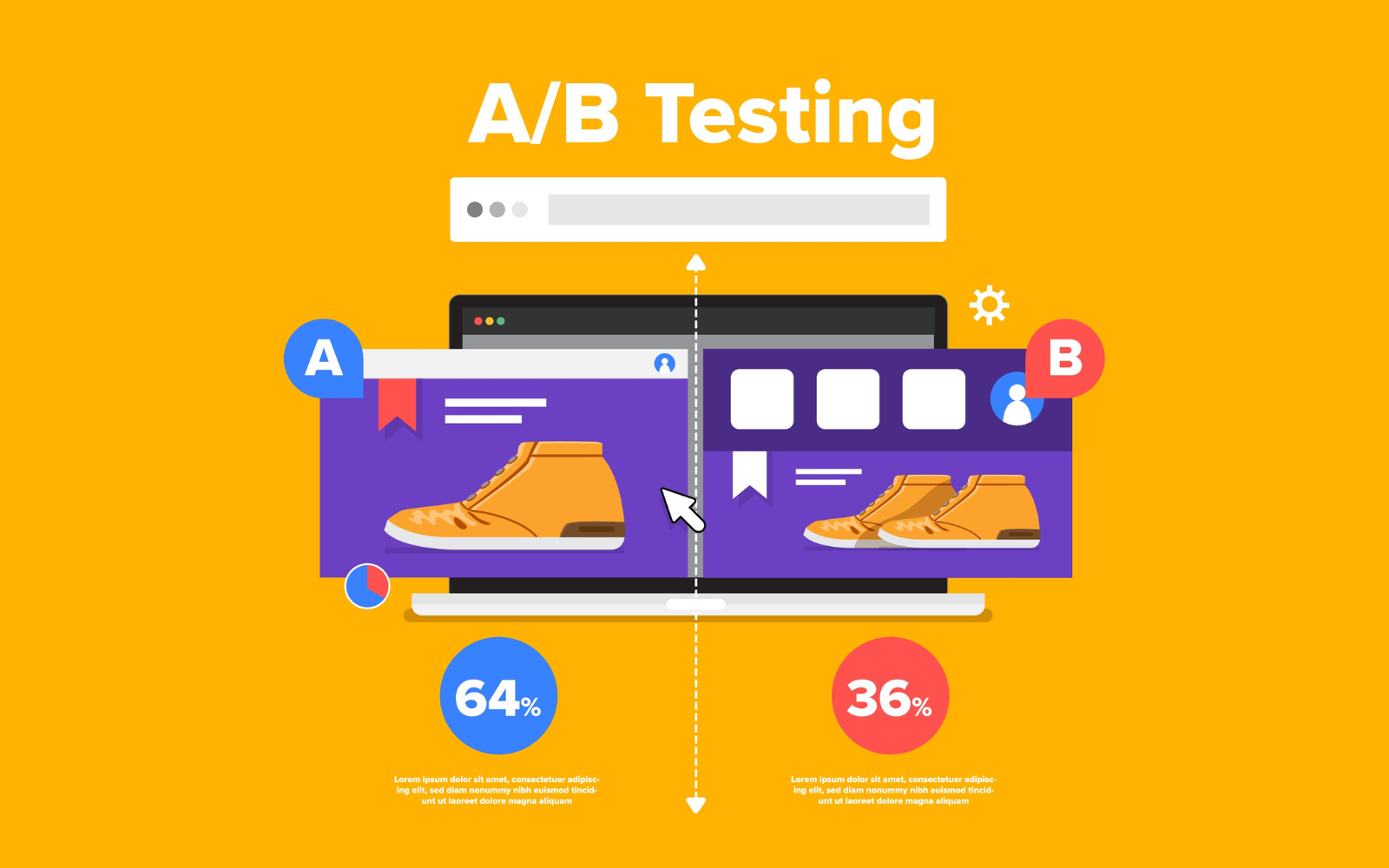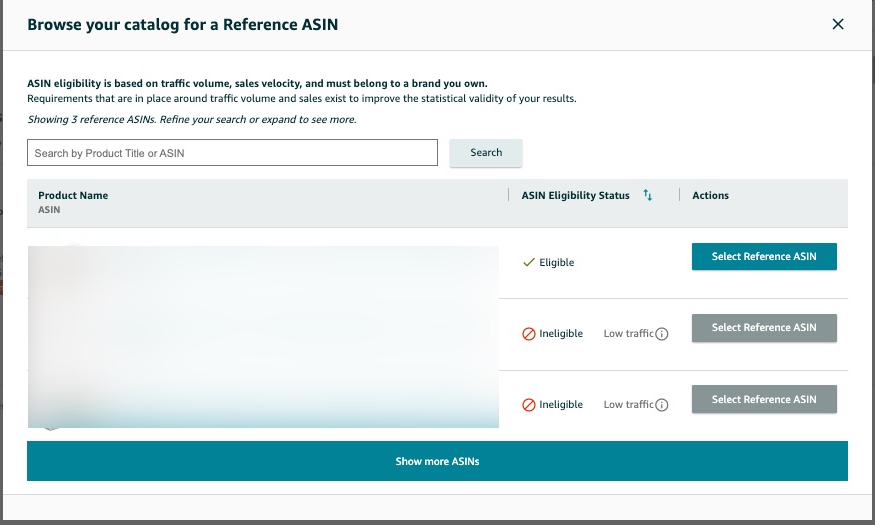SEO
A/B Testing For Amazon

As Amazon has become more competitive, refining your content for your ideal customers is vital to maximizing conversions and ad performance.
Amazon advertising adoption rates have continued to rise, especially with the limitation of targeting capabilities off Amazon’s platform for Google and Meta.
This overall increase in ad spend on Amazon has made it so that you must have a more thorough marketing plan and converting content to be successful on the platform.
A/B testing is one way to ensure you can hold your organic rankings and current ad performance on Amazon. It also allows you to adjust your content to rank for your most important keyword terms more easily and make incremental improvements to your advertising returns.
Since SEO on Amazon is primarily based on conversions, small changes that increase conversion for your most important keywords can significantly impact your ability to capture organic traffic and sales.
We have seen that changing the word order in a title can decrease Total Advertising Cost of Sale (TACOS) and increase the percentage of items attributed to organic sales.
We have also seen that these changes can change how a listing converts for important keyword phrases.
Additionally, A/B testing provides insights into what is important to your customers, which can also help as you develop product extensions for your brand.
Why A/B Testing Is Important
On Amazon, most of the product detail page conversion rate optimization (CRO) is handled for you. However, your primary image and title are pivotal in both ad performance and generating organic traffic.
This is because these two elements are creative for most ROI-focused ad campaigns on the platform.
They are the only part of your listing that customers see from the Amazon search engine result pages (SERPs).
Small changes to the order or the phasing of a title can greatly impact how your ads perform, allowing you to rank for competitive but highly relevant keywords.
If your brand does not have a lot of existing branded searches, it is especially important to use an exact match of your most relevant keywords in the title whenever possible.
If you have more existing branded search, focus on ensuring that the product and its key features are easily identifiable even when the title is truncated.
Changes to the title, bullets, and A+ content within your listing can significantly impact how well your product is indexed by Amazon’s search algorithm.
Therefore, A/B testing allows you to experiment with different content variations, emphasis, and use cases, and identify what resonates best with your target customers.
When Should You Consider An A/B Test
Low Click-Through Rate (CTR)
A low click-through rate (CTR) on ads often indicates issues with your title or primary image, assuming that target keywords are relevant. Optimizing these elements can help attract more clicks and increase ad performance.
Weak Conversion Rate (USP)
A low conversion rate or a weak Unit Session Percentage (USP) across your entire listing can be a result of suboptimal titles, images, secondary images, or bullet points.
It is crucial to ensure that your listing provides all the necessary purchase information and aligns with your customers’ search keywords.
Testing Pricing
Price elasticity should be considered as well. Assess if there are similar offers priced significantly higher or lower than yours; your pricing may be deterring potential buyers.
Be sure to look at what similar products are running on your listing. If you see a product that is very close to the same quality as yours at a much higher or lower price, check the data in Brand Analytics and see if those competitors are out-converting you for similar keywords.
If you have already addressed any potential content issues in your copy and images, now would be the time to see if testing pricing could help your overall sales performance.
How To A/B Test On Amazon
Manage My Experiments
Utilize the “Manage My Experiments” feature whenever possible, as it ensures clean and reliable data while minimizing external factors.
The winning test variant can be automatically implemented on your listing, streamlining the process. Keep in mind that statistically significant results require a sufficient volume of traffic and conversions.
With Manage My Experiments, you can test the following:
- Title.
- Main Image.
- Bullet Points.
- A+ Content.
- Product Description.
 Screenshot from Amazon Seller Central, July 2023
Screenshot from Amazon Seller Central, July 2023Not all products and not all sellers are eligible to use Manage My Experiments (MME).
Here are some of the requirements of the program:
- Only registered brand owners are allowed to run experiments with MME.
- ASIN must have significant traffic, as determined by Amazon.
- Only one ASIN is allowed to be tested at a time.
ASINs that Amazon determines do not have enough traffic will not show as eligible for testing. The only way to make ASIN eligible is to drive additional traffic, such as with advertising.
 Screenshot from Amazon Seller Central, July 2023
Screenshot from Amazon Seller Central, July 2023When you create your test, you can choose between a set duration – or for “To Significance,” Amazon recommends that you run to significance.
For the set durations, your testing options are 4, 6, 8, or 10 weeks. You can also set the test to publish the winning creative automatically.
Other Testing Options
Manual testing can be done by comparing Detail Sales and Traffic Report data.
Simply make the creative changes through Seller Central for a specific period of time (I recommend at least three weeks with each creative option) and compare the traffic and conversion data for each period.
The product’s conversion rate on Amazon is found in the Detailed Sales and Traffic report under the heading Unit Session Percentage.
A/B Testing Best Practices For Amazon
To make the most of your A/B testing efforts on Amazon, it is essential to follow these best practices:
Test One Variable at A Time
To have clear results, it is important you only test one variable at a time. To a degree, using Manage My Experiments helps with this.
However, especially if you are not using Manage My Experiments, limit big changes to advertising spend and strategy during your testing.
Start with more significant changes and then fine-tune. Experiment with substantial modifications to gauge their impact, and gradually refine the details based on your gathered data-driven insights.
Consider Important Shopping Dates
Some dates tend to impact customer buying behaviors.
This is an extreme example, but testing the week of Thanksgiving will not give you the best results, as buyers don’t buy with the same consideration and velocity during this period.
This is also especially important if you run manual tests outside Manage My Experiments.
If someone were to run a test in November with the first creative in the first two weeks and the second creative in the last two weeks, the results would artificially point to the second option because of increased buying in general for most products the week of Thanksgiving.
Consider Outside Variables
Outside influences like blogs or social media mentions can also impact manual tests. Consider running tests for longer durations or repeating them to validate the results.
You might also want to watch for any social mentions or increased traffic on your website to identify if a blog or other mention could have caused an increase in your branded traffic.
Third-party tools like Semrush’s free A/B testing tool can also be helpful but ensure the listing changes take effect to obtain accurate results.
Amazon Handles The Page CRO – Continue To Refine Your Content
Focus on content testing, as Amazon already handles most of the page conversion rate optimization. Refining the content can better align it with your target customers’ preferences.
A/B testing plays a pivotal role in maximizing your Amazon ad performance.
By leveraging this practice, businesses can identify areas for improvement in their listings, optimize content based on customer preferences, and stay competitive in the marketplace.
Utilizing the flags for testing and employing best practices, you can make data-driven decisions and effectively target your ideal customers, resulting in improved conversions and enhanced ad performance on Amazon’s platform.
More resources:
Featured Image: emojoez/Shutterstock


















